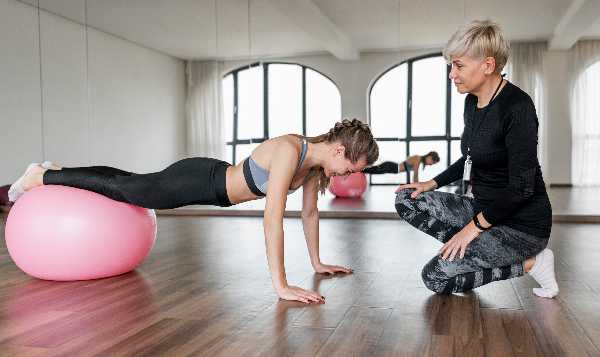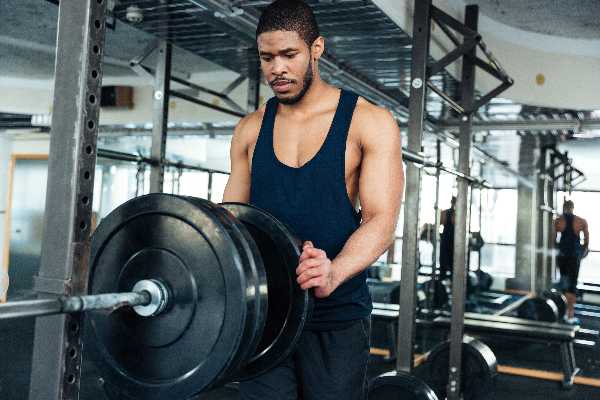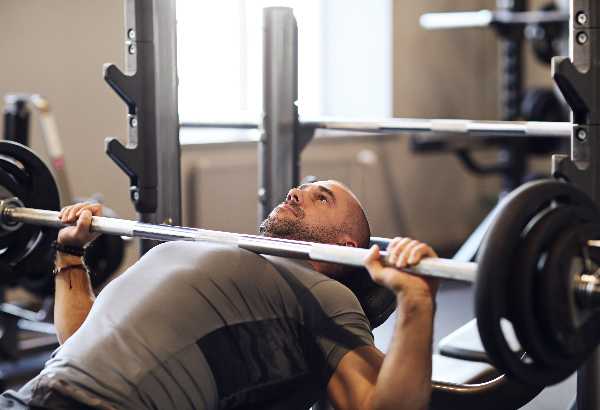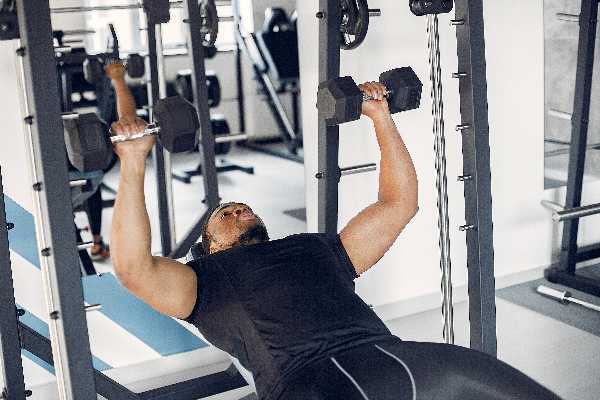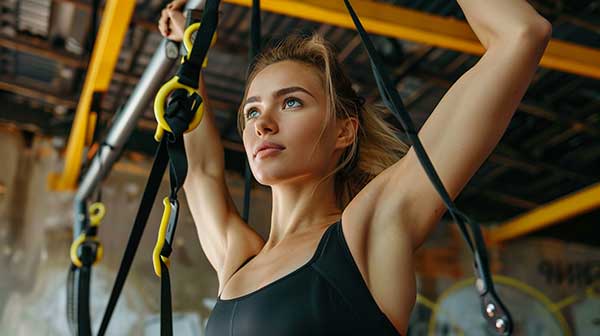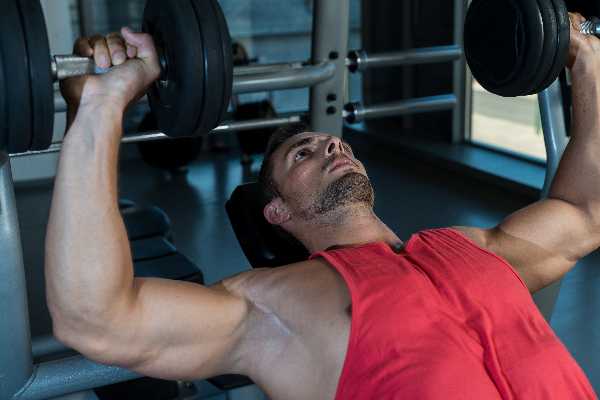Best Chest Exercises That Women Can Do at Home or The Gym
Introduction to the importance of chest exercises for women
Chest exercises may not always be at the top of a woman’s workout priority list, but they deserve a spot in your fitness routine. A strong chest can enhance posture, boost confidence, and improve overall strength. Whether you’re working out at home or hitting the gym, targeting this area can lead to impressive results.
Many women shy away from chest workouts due to misconceptions about bulkiness or simply because they focus on other muscle groups. However, incorporating chest exercises into your regimen is essential for balanced strength and aesthetics. Let’s explore some of the best chest exercises that women can do wherever they prefer to break a sweat!
Benefits of incorporating chest exercises into workout routine
Incorporating chest exercises into your workout routine offers numerous advantages that go beyond aesthetics. A strong chest contributes to better posture, helping you stand tall and reducing the risk of back pain.
These exercises also enhance upper body strength, making daily activities like lifting groceries or playing sports easier. Improved strength translates to increased performance in other workouts, such as push-ups or bench presses.
Additionally, targeting the chest can boost overall confidence. Feeling strong in this area can positively influence how you perceive yourself and how others see you too.
Engaging in a variety of chest exercises promotes muscle balance which is essential for joint health. This balance helps prevent injuries during both fitness routines and everyday movements.
Moreover, working on your chest muscles aids in calorie burning. Incorporating resistance training increases metabolic rate, contributing to weight management goals over time.
Top 5 chest exercises for women:
Push-ups are a classic choice. They engage multiple muscles, including the chest, shoulders, and triceps. Plus, they can be modified to suit any fitness level.
Next up is the dumbbell chest press. This exercise targets the pectoral muscles effectively. Lying on your back with weights in hand allows for controlled movement and great form.
Chest flyes using resistance bands offer another fantastic option. They stretch and strengthen your chest while providing versatility at home or in the gym.
Incline push-ups shift focus slightly higher on the chest while being less intense than standard push-ups. It’s a perfect way to build strength gradually.
Cable crossovers deliver an excellent workout for shaping and toning your pecs. The cables provide constant tension throughout each repetition for maximum muscle engagement.
A. Push-ups
Push-ups are a classic exercise that can be done anywhere—at home or the gym. They effectively target the chest, shoulders, and triceps. This makes them a powerhouse move for building upper body strength.
To perform a push-up, start in a plank position with your hands slightly wider than shoulder-width apart. Lower your body until your chest nearly touches the ground while keeping your core tight. Push back up to the starting position.
Variations like knee push-ups make this exercise accessible for beginners. For an added challenge, try elevating your feet or using one arm.
Not only do push-ups enhance muscle tone, but they also improve stability and posture over time. With consistent practice, you’ll notice increased endurance and strength in no time!
B. Chest press with dumbbells
The chest press with dumbbells is a fantastic exercise for building strength and defining your pectoral muscles. This move targets the chest, shoulders, and triceps, making it a well-rounded addition to any workout routine.
To perform this exercise, lie on a flat bench with a dumbbell in each hand. Keep your feet planted firmly on the ground. Start by holding the weights at shoulder level, palms facing forward.
As you exhale, push the dumbbells upward until your arms are fully extended but not locked out at the elbows. Lower them back down slowly while maintaining control. Focus on squeezing your chest muscles throughout the movement.
For variety, try adjusting your arm angle or using an incline bench to emphasize different areas of your chest. Adding resistance bands can also intensify this exercise while providing additional stability work as you lift.
C. Chest flyes with resistance bands
Chest flyes with resistance bands are a fantastic way to target the pectoral muscles while also incorporating functional fitness. This exercise allows for a full range of motion, which can enhance strength and flexibility.
To perform this move, secure the resistance band at shoulder height behind you. Stand with your feet hip-width apart, grab the ends of the band, and extend your arms out to the sides.
As you bring your hands together in front of your chest, keep a slight bend in your elbows. Control is key here; avoid letting momentum take over.
You can adjust the tension by stepping closer or further from where the band is anchored. This makes it adaptable for beginners and more advanced users alike.
Incorporating chest flyes into your routine not only shapes and strengthens but also improves posture by balancing muscle development across the upper body.
D. Incline push-ups
Incline push-ups are a fantastic variation that targets the upper chest while being easier on the shoulders and wrists. They’re perfect for women looking to build strength without straining their joints.
To perform this exercise, find a sturdy elevated surface like a bench or step. Place your hands shoulder-width apart on the edge, ensuring your body forms a straight line from head to heels.
Lower yourself towards the surface by bending your elbows, keeping them close to your torso. Push through your palms to return to starting position. You can adjust the height of the incline based on your fitness level; higher surfaces make it simpler.
Incorporating incline push-ups into your routine not only tones muscles but also enhances core stability and balance. Experiment with variations such as wide grip or diamond push-ups for added challenge and variety in each workout session.
E. Cable crossover
The cable crossover is a fantastic exercise that targets the chest muscles while also engaging your shoulders and arms. This versatile move can be performed using a cable machine, making it perfect for both gym enthusiasts and those at home with resistance bands.
To execute this exercise, position yourself in the middle of two cables. Stand tall, feet shoulder-width apart, and grab the handles with outstretched arms. As you draw your hands together in front of you, maintain a slight bend in your elbows to protect your joints.
Focus on squeezing your chest as you bring the handles closer together. It’s essential to control the movement on both sides—don’t let gravity do all the work! You can adjust the height of the cables to target various parts of your chest for added variety.
Perfecting form will maximize benefits while minimizing injury risk. Try incorporating this dynamic exercise into your routine for impressive results!
Tips for proper form and variations for each exercise
Maintaining proper form is crucial to maximizing the benefits of chest exercises while minimizing the risk of injury. For push-ups, keep your body in a straight line from head to heels. Engage your core and ensure your hands are placed slightly wider than shoulder-width apart.
When performing the dumbbell chest press, lie flat on a bench with feet planted firmly on the ground. Your elbows should be at about 45 degrees as you lower and raise the weights for optimal muscle engagement.
For resistance band chest flyes, anchor the band securely behind you. Keep a slight bend in your elbows throughout the movement to protect your joints.
Incline push-ups can be modified by elevating your hands onto a step or bench, which reduces strain on your shoulders while still targeting those chest muscles effectively.
Adjust cable crossover height based on comfort; higher settings engage more upper pecs while lower ones focus on overall development.
How many times a week should women do chest exercises?
The frequency of chest exercises can vary based on individual goals. For general fitness, incorporating chest workouts two to three times a week is effective. This allows the muscles sufficient time to recover and grow.
If you’re aiming for strength or muscle building, consider adding an extra session. Just ensure you’re not overworking the muscles.
Listen to your body; if you feel sore or fatigued, it might be wise to take an extra day off between workouts. Balancing intensity with recovery is key.
Additionally, mixing in other upper body exercises can enhance overall strength while keeping your routine fresh and engaging. Rotate through different movements and equipment to prevent boredom and maximize results.
Personalizing your schedule will keep you motivated while helping achieve your fitness goals effectively.
The myth
When it comes to chest exercises for women, a common myth persists: lifting weights will make you bulky. This misconception can deter many from wanting to incorporate chest workouts into their routine. The truth is that resistance training won’t automatically lead to a bodybuilder physique. Instead, weightlifting helps tone and strengthen muscles.
Women typically have lower levels of testosterone than men, which means they are less likely to bulk up significantly from strength training alone. Incorporating chest exercises can enhance your overall upper body strength and improve posture without adding unwanted size.
It’s essential to focus on your fitness goals rather than worrying about the scale or how much muscle mass you might gain. Embrace the process of building a strong core and feeling confident in your abilities—both at home and in the gym.
By understanding these facts, women can approach chest workouts with enthusiasm instead of apprehension, allowing them to fully enjoy all the benefits that come with strengthening this crucial area of their bodies. Remember, empowerment through exercise is what truly matters!
- About the Author
- Latest Posts
Johnnie D. Jackow Sr., the founder and CEO of Total Body Fitness, Worldwide, has a long-standing career in the fitness industry. He began as a certified personal trainer in the mid-90s and soon after authored his first weight loss book in 1998. This led to the launch of Total Body Fitness, Nationwide in the USA at the same time. Johnnie gained recognition as the fitness guru of his time, running infomercials on local TV late at night in Houston, Texas. Over the years, he has helped more than 40,000 individuals from all over the world achieve their health and fitness goals. With over 60,000 hours of documented training in integrative functional medicine, he completed his PhD in human physiology in 2010. His primary objective is to assist people in reaching their health and fitness goals through alternative approaches rather than relying solely on conventional medicine and pharmaceutical drugs. Today, with almost three decades of experience under his belt, Johnnie continues to be a leader in health and fitness.

